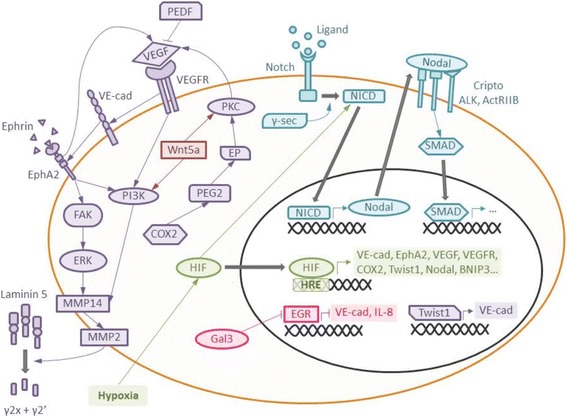Fig. 1.

Main signaling pathways involved in vasculogenic mimicry. In vascular signaling (purple), VE-cadherin, EphA2 and VEGF lead to proteolytic cleavage of laminin 5 and release of pro-migratory γ2x and γ2’ fragments in the extracellular matrix. Galectin 3 supports the vascular pathway, since it enhances the expression of VE-cadherin. Stem cell signaling (blue), controlled by Notch and Nodal, up-regulates genes for pluripotency and de-differentiation. Hypoxia (green) contributes to all previous pathways by mediating expression of some crucial signaling molecules. Finally, Wnt proteins may promote vasculogenic mimicry through the activation of PKC and PI3K signaling, though it could play a role in tumor suppression in certain cases
